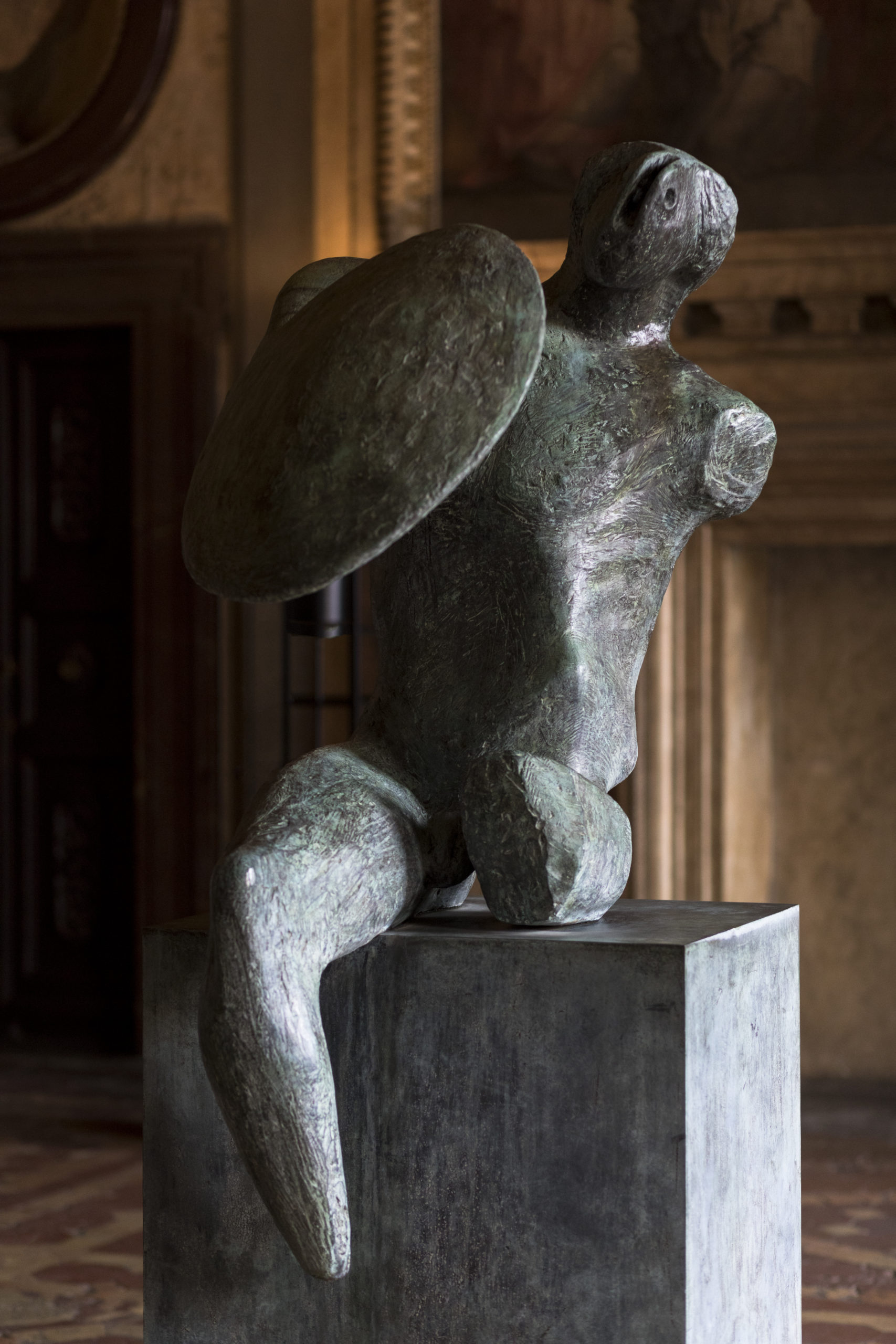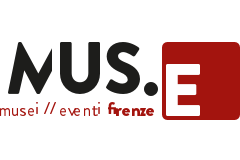Where and when
From
To
Altre sedi
The Warrior with Shield by Henry Moore returns to Palazzo Vecchio after almost fifty years from the great exhibition at the Forte di Belvedere
Exhibition Hours
Palazzo Vecchio – Sala Leone X
Monday – Sunday
9:00
–
19:00
Thursday
9:00
–
14:00
The sculpture returns ‘home’ and will be exhibited in Palazzo Vecchio, in the Sala Leone X, one of the most representative rooms, below that Terrace of Saturn which represented the stage dreamed of by Moore for his Warrior.
Following the great exhibition organized at the Forte di Belvedere in 1972, Henry Moore decided to donate a work to the city of Florence: the bronze sculpture Warrior with Shield, created for the first time in 1953-54 and then presented on the occasion of the famous Florentine retrospective. The work should have been placed in the Loggia di Saturno, in Palazzo Vecchio, but for an interminable series of vicissitudes.
The artist asked for it to be returned and the Warrior returned to England. Only in the eighties, thanks to a resumption of confrontation with Moore’s heirs and the interest of the British Institute of Florence, to which the work was donated at the behest of the artist’s family, the bronze finally returned to Florence. Following the agreement between the Florentine municipal administration and the British Institute itself, the long-term loan for use formula was reached and it was decided to place the bronze in the first cloister of the monumental complex of Santa Croce, where, up to today, it has been preserved.
The Story
In the early Seventies, while Moore, fresh from the success of his exhibition at the Forte di Belvedere, decided to donate the Warrior with Shield to Florence, the then Mayor of the city Luciano Bausi was working to acquire a second work by the artist, Reclining Figure, at the time kept in Berlin, the cost of which amounted to 35,000 pounds. The Warrior would therefore have joined that acquisition and the city would have welcomed two emblematic works by the English master on the territory, in memory of the relationship that had linked him to Florence. The Warrior would therefore have joined that acquisition and the city would have welcomed two emblematic works by the English master on the territory, in memory of the relationship that had linked him to Florence.The Warrior would therefore have joined that acquisition and the city would have welcomed two emblematic works by the English master on the territory, in memory of the relationship that had linked him to Florence.The Warrior would therefore have joined that acquisition and the city would have welcomed two emblematic works by the English master on the territory, in memory of the relationship that had linked him to Florence. The Warrior would therefore have joined that acquisition and the city would have welcomed two emblematic works by the English master on the territory, in memory of the relationship that had linked him to Florence.
The Warrior would therefore have joined that acquisition and the city would have welcomed two emblematic works by the English master on the territory, in memory of the relationship that had linked him to Florence.
However, it was not possible to find the sum necessary to bring the Reclining Figure to Florence and in the end the project to acquire this second job failed. Meanwhile, in 1974, the Warrior with Shield returned to town. However, the difficulties of setting up delayed its placement in the Terrace of Saturn and the sculpture was ‘temporarily’ presented in the third courtyard of the Palazzo: a location that put at risk the metal patina of the work, designed for indoor display.
Ten years later, in 1984, Henry Moore received a photograph taken by David Finn showing the ‘abandoned’ sculpture in the courtyard of Palazzo Vecchio. The artist also became aware of the epithet “monument to the one-armed”, with which the Florentines mockingly mocked her, and decided to ask for its return. The Municipality, which in the meantime had lost all rights over it, was forced to send it back to England. The story caused a great stir, finding an important echo in the press of the time, including international ones, and the new mayor, Massimo Bogianckino, worked hard to bring the sculpture back to Florence.
Following Moore’s death, in August 1986, Maria Luigia Guaita and the then British Consul, urged by the Municipality, wrote heartfelt letters to their daughter Mary and widow Irina in which, touching the strings of esteem and The affection that bound Moore to the cradle of the Renaissance also appealed to the memory of the Florentine exhibition in 1972. In the end, Irina Moore decided to donate the Warrior to the British Institute of Florence and the work was able to return to the city for which it was destined. The work was then placed in the cloister of the monumental complex of Santa Croce, near the “urns of the forts”, where it is usually exhibited.
Today the Warrior finally returns to Palazzo Vecchio, in one of the most representative monumental rooms of the Palazzo. The work combines the influence of classical statuary and the careful observation of natural forms, revealing the artist’s multiplicity of interests.
Surrounded by the precious frescoes of the Sala di Leone X, the figure of this mutilated young man spurs us to resist in the face of the battles of history and everyday life, showing himself in all his immobile and precarious pride. Even if at a distance of a few meters, it also triggers a significant dialogue with Michelangelo’s Genius of Victory and with the battle scenes that decorate the Salone dei Cinquecento. Moore, a committed pacifist, who had gone through two world wars, celebrates heroism by highlighting the inhumanity of every fratricidal conflict.
Artist
Henry Moore
1898, Castleford, United Kingdom – 1986, Perry Green, United Kingdom
Curated by
Sergio Risaliti
Scientific Coordination
Francesca Neri
Luca Puri
Press
Lea Codognato | Caterina Briganti | Davis&Co.
Press Office Museo Novecento
T. 055 2347273
Comunication
Costanza Savelloni
Visual Identity
Dania Menafra
Ph Credits
In collaboration with
British Institute of Florence
Opera di Santa Croce
Sponsor
Apice Firenze S.r.l.
Strategica Group

